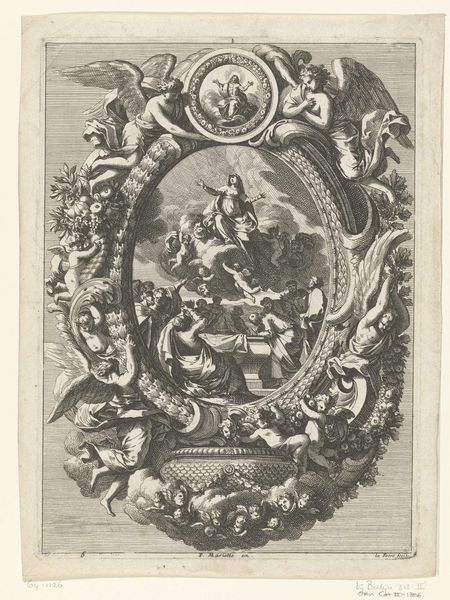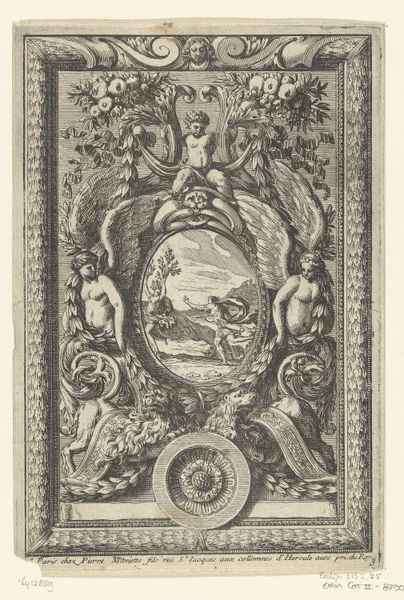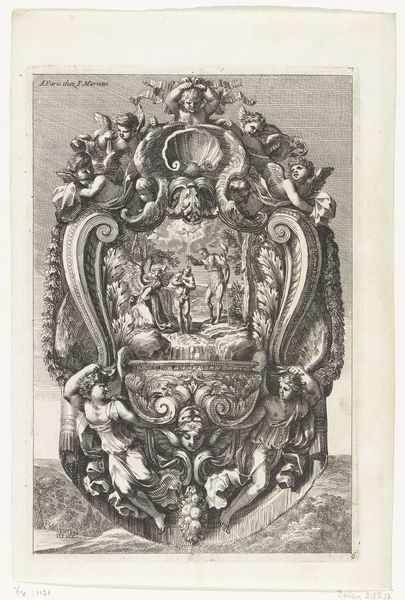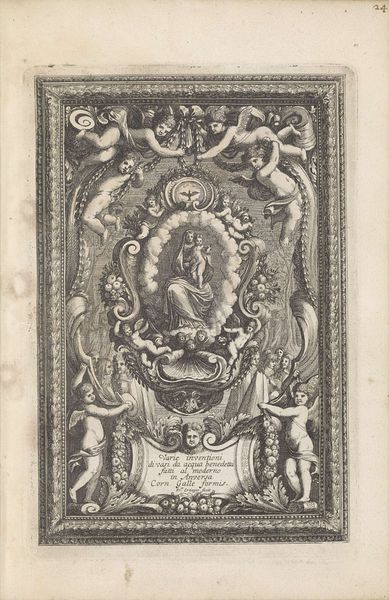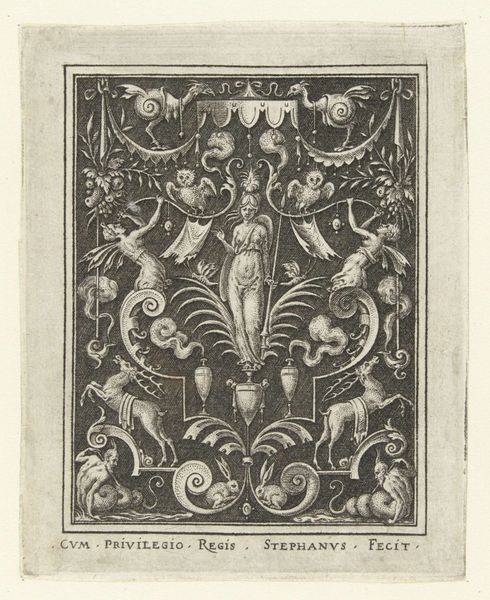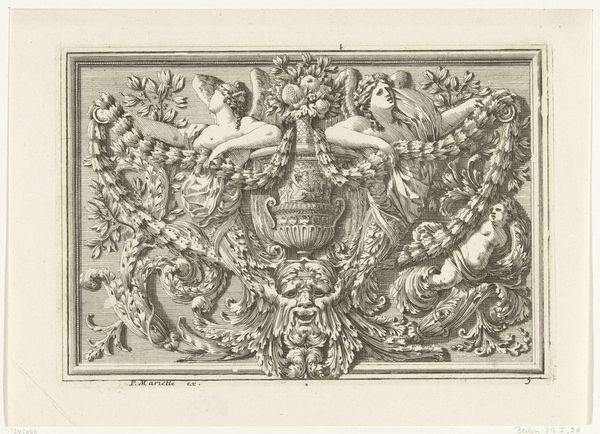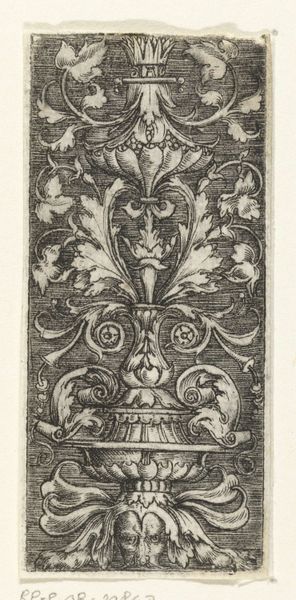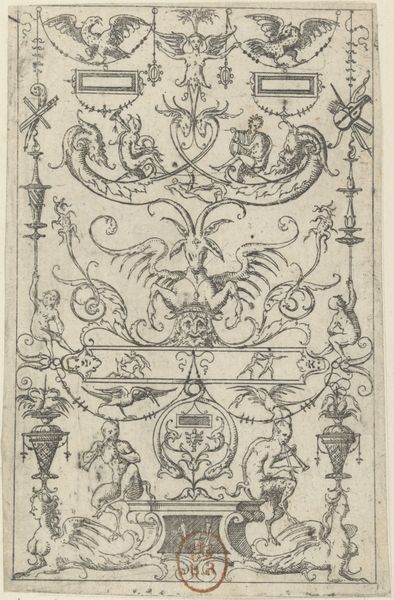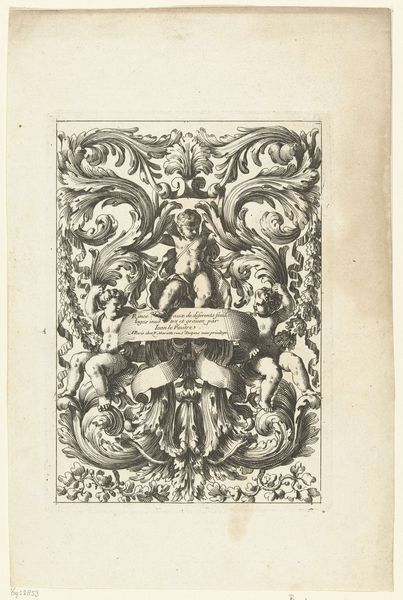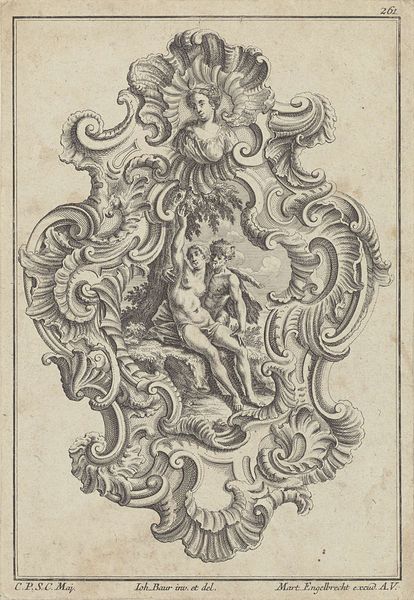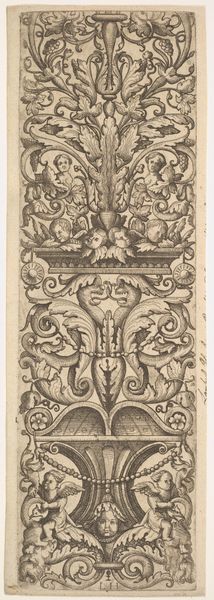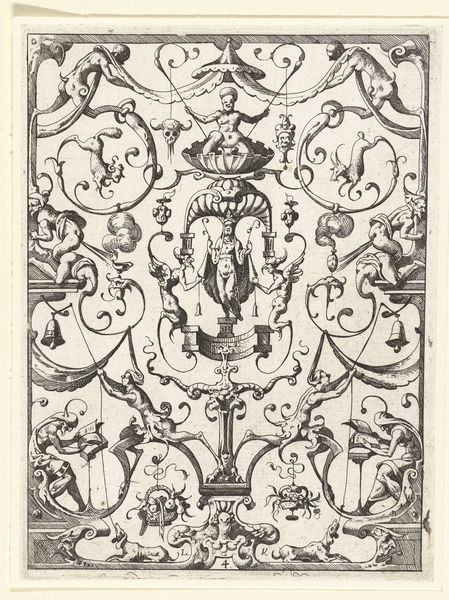
Titelblad: Escusons, ou Entrees de Cerures et autres Ornemens seruants a embelir la Cerurie before 1667
0:00
0:00
jeanlepautre1
Rijksmuseum
graphic-art, print, engraving
#
graphic-art
#
baroque
# print
#
form
#
line
#
engraving
Dimensions: height 228 mm, width 156 mm
Copyright: Rijks Museum: Open Domain
Curator: Oh, my heart does a little flutter! This is "Titelblad: Escusons, ou Entrees de Cerures et autres Ornemens seruants a embelir la Cerurie"— quite a mouthful, I know! It's an engraving by Jean Lepautre, dating back to before 1667. The Rijksmuseum has this beauty. What's your initial feeling? Editor: I’m struck by the tension between accessibility and exclusion here. On one level, the title suggests this image would be a kind of "decoration how-to" for locks, something utilitarian. But, those intertwined figures! That flourish! It screams opulence. Who were these designs *really* for? Curator: Isn't that the charm, though? It’s all about elevating the mundane, glorifying the functional. Lepautre’s line work is so precise, creating an almost theatrical presentation of the lock and keyhole. You’ve got these rather imposing figures almost burdened, in an oddly graceful way, by all the ornament around the central keyhole. It’s almost humorous! Editor: "Humorous" is one way to put it. But I can’t shake the thought that we’re looking at a system of hierarchy materialized. Those figures supporting this elaborate structure mirror those societal burdens of the lower class during the Baroque, whilst also alluding to questions about access to property and power… Who gets in? Who gets locked out? Curator: Perhaps. Or maybe he just found the human form the perfect support, literally and aesthetically, for his designs? The symmetry, the dynamism – they’re all classic Baroque elements, really emphasizing decoration as drama. It makes me wonder about the artisans who’d then translate this into actual metalwork. Imagine the skill! Editor: Skill absolutely, but also, again, think about who had the capital for the luxury of such intricate ornamentation. While it might be displayed as a template for all, the likelihood that it was put into place by specialized artisans suggests the consumer base was very specific – people in the court who likely did very little, if any, physical labor. The very key acts as both material and symbolic representation. Curator: Mmm, valid point. The title page itself becomes a symbolic gateway. Editor: Precisely. Perhaps the “beauty” you mentioned is merely surface-level. Perhaps it exists as a system of symbols pointing back to who had and did not have entry in early modern European society. Curator: Oh, well now my initial admiration has new, richer undertones. Always so interesting to reflect.
Comments
No comments
Be the first to comment and join the conversation on the ultimate creative platform.
